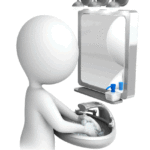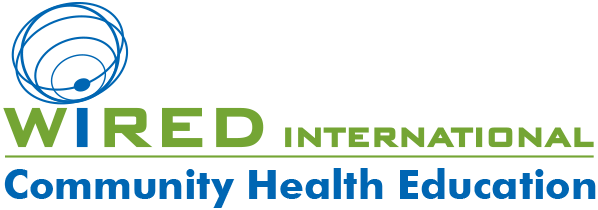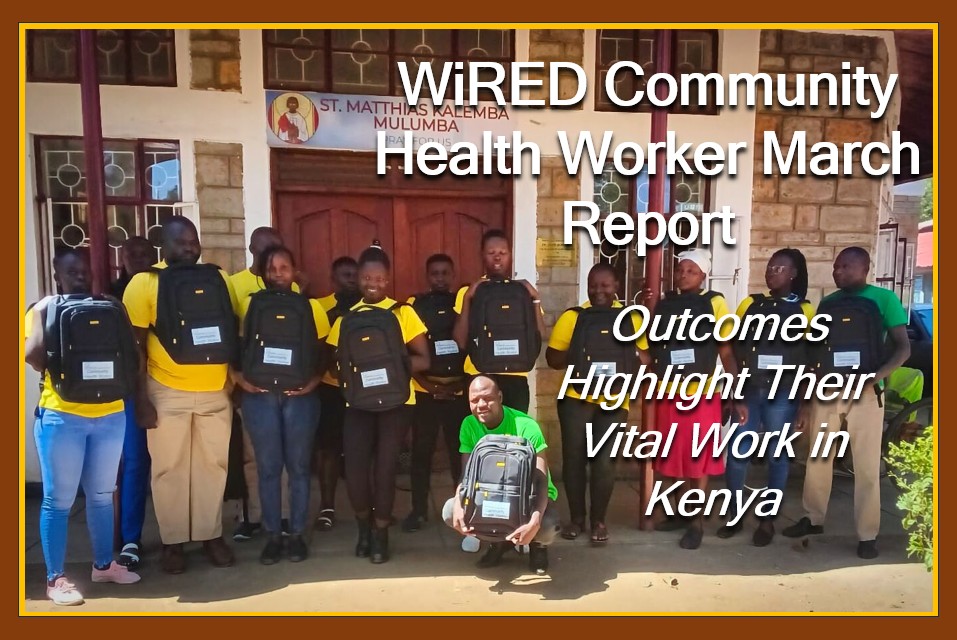By Allison Kozicharow; Edited by Elizabeth Fine
WiRED International’s new community health worker (CHW) reporting system is up and running in Kisumu, Kenya!
Why is WiRED expanding our CHW program by implementing this reporting system? The answer is simple: There are few medicines and vaccines available to treat endemic illnesses such as cholera, malaria and HIV/AIDS — because of U.S. Government cuts to global health funding. Consequently, CHWs now play a more critical role than ever in serving their communities and their work and its results need to be closely evaluated.
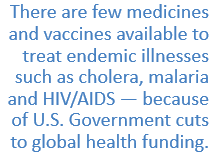 WiRED has been augmenting its CHW training programs as much as our resources permit in order to address these shortfalls. As a small NGO, of course, we are unable to fill the yawning gap in healthcare services and supplies, but our CHWs are doing everything they can to address the growing needs by studying the illnesses to stay informed and preparing their communities to prevent the onset of disease.
WiRED has been augmenting its CHW training programs as much as our resources permit in order to address these shortfalls. As a small NGO, of course, we are unable to fill the yawning gap in healthcare services and supplies, but our CHWs are doing everything they can to address the growing needs by studying the illnesses to stay informed and preparing their communities to prevent the onset of disease.
Last month WiRED initiated an outcomes procedure in Kisumu, Kenya that measures CHW clinical services and referrals. These “outcomes” help us understand the direct intervention and level of care that CHWs provide. The reports provide insight into how CHWs contribute to community health, demonstrating their worth to the well-being of people in healthcare deserts, where doctors are scarce and regular care is unaffordable. Further, the reports offer us the ability to develop a reliable and cost-effective strategy to bring a significant level of care to communities otherwise left out of the healthcare system.
Cholera
Background
Cholera, spread by contaminated water and food, is a bacterial infection that can lead to severe, often life-threatening, diarrheal illnesses. According to reliefweb, Kenya is experiencing a cholera outbreak that has escalated significantly in recent weeks. As of April 6, 2025, the Kenya Ministry of Health reported 97 confirmed cases and six deaths, resulting in a high case fatality rate of 6.2%. This is more than double the number of cases reported by the World Health Organization on March 20, 2025, indicating rapid spread.
Accordingly, WiRED’s CHWs have been reviewing their knowledge of cholera prevention and treatment and preparing their communities for a possible outbreak. Also, they have been on watch for cholera in their daily rounds and have referred people with cholera symptoms for further testing.
March Cholera Outcome Reports
CHW Daniel Ayieko referred five people out of 46 participants who complained of diarrhea to the Kisumu sub-county hospital for cholera diagnosis. They got tested and they turned out to be negative. Recognizing the Health Ministry’s cholera warnings, Daniel continues with cholera prevention and treatment in his subsequent trainings.
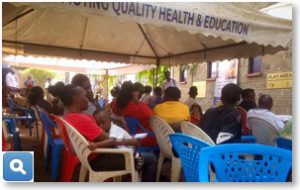 CHW Linet Awuor referred two children suffering from diarrhea to the Kuoyo dispensary. They were treated and luckily no case of cholera was detected. They are currently on medication and practicing proper handwashing together with their mother.
CHW Linet Awuor referred two children suffering from diarrhea to the Kuoyo dispensary. They were treated and luckily no case of cholera was detected. They are currently on medication and practicing proper handwashing together with their mother.
This month a CHW escorted six people who were suffering from cholera to the Migosi sub-county hospital. Follow-up confirmed that they had been given medications and were faring well.
HIV/AIDS and Sexually Transmitted Infections (STIs)
Background
Significant recent funding cuts are severely impacting the availability of medications for STIs in East Africa, particularly for HIV treatment and prevention. The cuts directly impact the availability of drugs to treat HIV/AIDS and have already halted the availability and the distribution channels of these medications. UNAIDS reports that 46% of people who had been receiving the treatments told of a disruption in their supply of AIDS drugs. As remaining supplies are depleted, the disruption is expected to grow quickly across all of Africa.
The Center for Global Development (CGD) reports that maternal and child health has been slashed by nearly 85%, including treatment for maternal STIs that will likely result in transmission to children of diseases like syphilis and HIV.
March HIV/AIDS and STI Outcome Reports
CHW Millicent Randiki talked to over 500 people concerning HIV/AIDS. Fifty people agreed to be referred for HIV testing. Ten people tested HIV positive and agreed to be initiated on still available antiviral medications by the healthcare provider at Airport health center. When Millicent did follow-up she found out that six people are doing well and adhering to antiretroviral therapy.
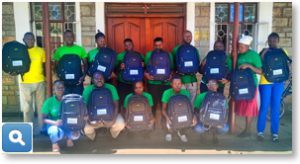 Three young women with suspected STIs were referred to Lumumba health facility where they were treated and are currently improving.
Three young women with suspected STIs were referred to Lumumba health facility where they were treated and are currently improving.
After conducting a session on STIs for 26 participants, a CHW escorted four people to the nearest dispensary to be tested. Three of them turned out to be positive for STIs and were treated. The other one who turned negative was again referred to sub-county hospital for further management.
During this reporting period, CHW Zachary Omondi came across two young boys aged 15 and 17 years. They were experiencing some signs of STIs. He referred them to the nearby dispensary for further medical checkup. Upon contacting them, Zachary learned that the results turned out to be negative. He advised them on the need for knowing their status and that of their partners. He also told them to use protection all the time.
Miscellaneous Health Concerns
Background
In addition to cuts in AIDS drugs, the Center for Global Development (CGD) reports that programs for TB have been reduced by 70%, impacting diagnosis and treatment. Other cuts have resulted in thousands of health workers losing their jobs, weakening the capacity of clinics to administer health services. Malaria programs and medications have been cut, along with pandemic preparedness and other health services that leave populations throughout Africa in a perilous position.
March Miscellaneous Health Concerns Outcome Reports
CHW Caren Osomo referred one man from the community to the hospital for tuberculosis diagnosis and he was found to have the disease. He was given medicine and she is doing follow-ups every week to confirm how he is coping with the medication. From what he shared with her after going to hospital, he is seeing changes and promised to take the drugs as he was advised.
 CHW Tracy Agatha Achieng’ encountered two women with fibroid cases. The first woman had severe pain in her stomach and had been using painkillers. After referral to the hospital the gynecologist confirmed that it was fibroids and she was taken to surgery. At the moment she is still under medication at bed rest.
CHW Tracy Agatha Achieng’ encountered two women with fibroid cases. The first woman had severe pain in her stomach and had been using painkillers. After referral to the hospital the gynecologist confirmed that it was fibroids and she was taken to surgery. At the moment she is still under medication at bed rest.
One lady who experienced blood clots during her menses was referred to the hospital where the doctor found out that she was misusing emergency pills, which were causing hormonal imbalance. She is currently under medication and feeling better.
CHW Bunnyce Atieno was a client who was sick with an illness. She reported, “I visited Nyawita medical hospital. I was given medication but did not respond well. When I went back I was admitted and given an IV. I am now discharged and recuperating well.”
A CHW came across a girl child being mistreated by her step parents. Since they didn’t want her, the CHW took her personally to an orphanage and is doing follow-ups by visiting her every day.
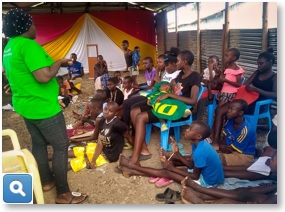 CHW Steve Wonder reports that most households felt challenged about taking care of their children: feeding them, educating them and giving them treatment when sick. After a class of sensitization about health issues, most mothers agreed to practice family planning. Quite a number of them opted for long-term family planning methods, and they say this has given them a chance to take care of their existing children.
CHW Steve Wonder reports that most households felt challenged about taking care of their children: feeding them, educating them and giving them treatment when sick. After a class of sensitization about health issues, most mothers agreed to practice family planning. Quite a number of them opted for long-term family planning methods, and they say this has given them a chance to take care of their existing children.
CHW Milka Nyadiang’a talked with 11 women about family planning, its benefits and the methods available. Seven agreed and went for the services at the health facility. They are now happy and are willing to sensitize others about family planning.
The following list is all in a day’s work for WiRED’s 20-member paraprofessional CHW team. Their work includes:
- Hosting group sessions about disease awareness, prevention and treatment
- Talking one-on-one with people
- Screening for illnesses
- Treating common complaints
- Providing simple medications to ease pain in the midst of stoppage of health funding programs, especially from the United States
- Performing home visits and offering home care
- Making referrals to clinics as needed
- Following up with patients
- Accessing WiRED’s 400+ library of health modules through our Android app
- Taking WiRED-required continuing medical education to remain up to date with their skills.
March CHW Report
During the month of March 2025, 20 CHWs in Kisumu, Kenya, reached a total of 9,747 people with health services. Working 24 hours per week, each of the CHWs met with at least 30 patients a week, and the largest number seen in a week by a single CHW was 350, most of them in health training classes.
Top health topics of concerns for the month of March in order of prevalence:
- Cholera, #1 by far
- Malaria
- HIV/AIDS
- Water treatment
- Hygiene
- Mental health
- Handwashing
